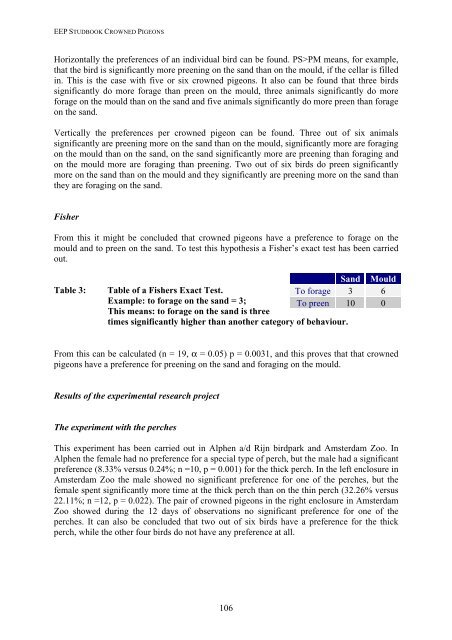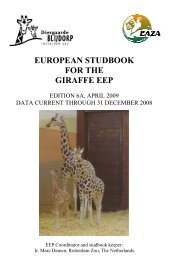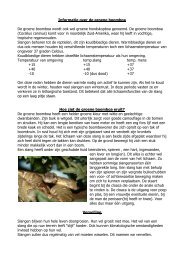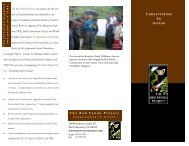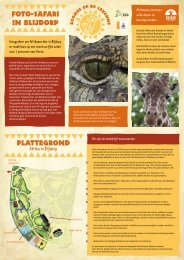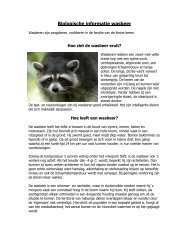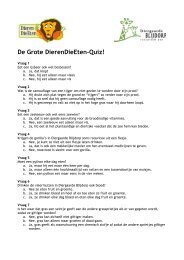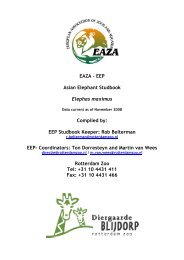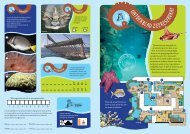You also want an ePaper? Increase the reach of your titles
YUMPU automatically turns print PDFs into web optimized ePapers that Google loves.
<strong>EEP</strong> STUDBOOK CROWNED PIGEONS<br />
Horizontally the preferences of an individual bird can be found. PS>PM means, for example,<br />
that the bird is significantly more preening on the sand than on the mould, if the cellar is filled<br />
in. This is the case with five or six crowned <strong>pigeon</strong>s. It also can be found that three birds<br />
significantly do more forage than preen on the mould, three animals significantly do more<br />
forage on the mould than on the sand and five animals significantly do more preen than forage<br />
on the sand.<br />
Vertically the preferences per crowned <strong>pigeon</strong> can be found. Three out of six animals<br />
significantly are preening more on the sand than on the mould, significantly more are foraging<br />
on the mould than on the sand, on the sand significantly more are preening than foraging and<br />
on the mould more are foraging than preening. Two out of six birds do preen significantly<br />
more on the sand than on the mould and they significantly are preening more on the sand than<br />
they are foraging on the sand.<br />
Fisher<br />
From this it might be concluded that crowned <strong>pigeon</strong>s have a preference to forage on the<br />
mould and to preen on the sand. To test this hypothesis a Fisher’s exact test has been carried<br />
out.<br />
Sand Mould<br />
Table 3: Table of a Fishers Exact Test.<br />
To forage 3 6<br />
Example: to forage on the sand = 3;<br />
This means: to forage on the sand is three<br />
To preen 10 0<br />
times significantly higher than another category of behaviour.<br />
From this can be calculated (n = 19, α = 0.05) p = 0.0031, and this proves that that crowned<br />
<strong>pigeon</strong>s have a preference for preening on the sand and foraging on the mould.<br />
Results of the experimental research project<br />
The experiment with the perches<br />
This experiment has been carried out in Alphen a/d Rijn birdpark and Amsterdam Zoo. In<br />
Alphen the female had no preference for a special type of perch, but the male had a significant<br />
preference (8.33% versus 0.24%; n =10, p = 0.001) for the thick perch. In the left enclosure in<br />
Amsterdam Zoo the male showed no significant preference for one of the perches, but the<br />
female spent significantly more time at the thick perch than on the thin perch (32.26% versus<br />
22.11%; n =12, p = 0.022). The pair of crowned <strong>pigeon</strong>s in the right enclosure in Amsterdam<br />
Zoo showed during the 12 days of observations no significant preference for one of the<br />
perches. It can also be concluded that two out of six birds have a preference for the thick<br />
perch, while the other four birds do not have any preference at all.<br />
106


